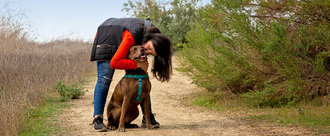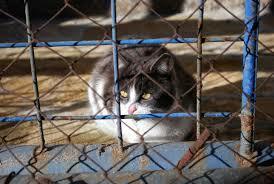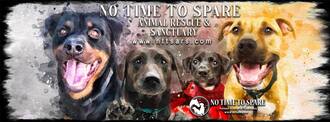-
Tell Mercedes officials: support lifesaving animal shelter programmingSometimes when you want to create change in your community, it's hard to know where to begin. Together we can make sustainable changes that save lives while creating a framework of support for the pets of Mercedes and the people who care about them. Animals who end up at the animal shelter are part of this community and local officials need to know you care about the whole community- pets and people. They need to know that you prioritize the local animal shelter adopting policies that decrease the number of dogs and cats euthanized and that you support providing resources needed to do so. Some examples of resources include community cat programming (to ensure cats are spayed/neutered, vaccinated, and returned to their homes), foster programming (to provide temporary housing to pets prior to finding their permanent homes), adoption outlets, and progressive field services and resources to ensure people have what they need to keep their pets. By advocating for these programs and continued collaboration with and support of your local animal shelter, you can be part of creating a healthier community for pets and people. Show your support by signing and sharing today!30 de 100 Firmas
-
Tell Elsa officials: support lifesaving animal shelter programmingSometimes when you want to create change in your community, it's hard to know where to begin. Together we can make sustainable changes that save lives while creating a framework of support for the pets of Elsa and the people who care about them. Animals who end up at the animal shelter are part of this community and local officials need to know you care about the whole community- pets and people. They need to know that you prioritize the local animal shelter adopting policies that decrease the number of dogs and cats euthanized and that you support providing resources needed to do so. Some examples of resources include community cat programming (to ensure cats are spayed/neutered, vaccinated, and returned to their homes), foster programming (to provide temporary housing to pets prior to finding their permanent homes), adoption outlets, and progressive field services and resources to ensure people have what they need to keep their pets. By advocating for these programs and continued collaboration with and support of your local animal shelter, you can be part of creating a healthier community for pets and people. Show your support by signing and sharing today!39 de 100 Firmas
-
Stop Puppy Mill Sales in Our Community - Albany, NYMore than 440 other cities, counties and states have already passed laws to stop the retail sale of pets sourced from commercial breeding facilities. It's time for our community to do the same. Puppy and kitten mills are in business to supply pet stores. The pets in these facilities often spend their entire lives in dirty, crowded cages for the sole purpose of producing as many animals as possible for the retail pet trade. Pet stores that obtain animals from these facilities are not an asset to our community. These facilities also produce puppies that are often sick, causing unsuspecting consumers to have to care for a new pet in need of expensive veterinary treatment. Milled puppies can also spread campylobacter, a dangerous, drug-resistant bacteria that is contagious to humans. In the past several years, the Centers for Disease Control and Prevention (CDC) traced a multi-state outbreak of Campylobacter to pet store puppies. This is a public health risk in a time where public health should be a top priority. A humane pet sales ordinance will not prevent pet stores from doing business, but it will reduce the burden on our shelters and rescue groups by increasing pet adoptions. It will also benefit our local ethical hobby breeders by allowing them to provide responsibly bred pets directly to those who cannot find what they are looking for through adoption. Please consider protecting pets and consumers by passing a humane pet sales ordinance for our community.357 de 400 FirmasCreado por Ishanvi R.
-
Saving Cats in Our Community - Clare County MichiganIn order to create compassionate no-kill communities and achieve no-kill for cats nationwide, we need communities to support lifesaving programs like Trap-Neuter-Return [TNR]. The process is simple: cats are caught (often by volunteers), evaluated by veterinarians, vaccinated, spayed or neutered, and returned to their original outdoor homes, unable to have kittens. These programs are also proven to be the most cost-effective, veterinarian-approved, and animal-friendly solution for controlling and reducing free-roaming cat populations.118 de 200 FirmasCreado por Erika E.
-
Save No Time To Spare Animal Rescue & Sanctuary in Warrenton, MO!Without No Time To Spare Animal Rescue and Sanctuary thousands of dogs and cats will have no where to go in Warren County. This forces people to dump animals and leave them defenseless. This affects peoples lives in so many ways. Presently in the United States approximately 1,000 animals are euthanized daily because we don't have enough shelters. No Time To Spare has been making a difference not only rescuing animals, but also making sure they are spay/neutered, microchipped and vetted before they are adopted. Please don't stop their good work for the community. We need them!1.914 de 2.000 FirmasCreado por Lynda B.
-
Saving Cats in Our CommunityIn order to create compassionate no-kill communities and achieve no-kill for cats nationwide, we need communities to support lifesaving programs like Trap-Neuter-Return [TNR]. The process is simple: cats are caught (often by volunteers), evaluated by veterinarians, vaccinated, spayed or neutered, and returned to their original outdoor homes, unable to have kittens. These programs are also proven to be the most cost-effective, veterinarian-approved, and animal-friendly solution for controlling and reducing free-roaming cat populations.98 de 100 FirmasCreado por Jennifer G.
-
Stop Puppy Mill Sales in Our CommunityMore than 400 other cities, counties and states have already passed laws to ban the retail sale of pets sourced from commercial breeding facilities. It's time for our community to do the same. Puppy and kitten mills are in business to supply pet stores. The pets in these facilities often spend their entire lives in dirty, crowded cages for the sole purpose of producing as many animals as possible for the retail pet trade. Pet stores that obtain animals from these facilities are not an asset to our city. These facilities also produce puppies that are often sick, causing unsuspecting consumers to have to care for a new pet in need of expensive veterinary treatment. Milled puppies can also spread campylobacter, a dangerous, drug-resistant bacteria that is contagious to humans. Recently, the Centers for Disease Control and Prevention (CDC) traced a multi-state outbreak of Campylobacter to pet store puppies. This is a public health risk in a time where public health should be a top priority. A retail pet sales ban will not prevent pet stores from doing business, but it will reduce the burden on our shelters and rescue groups by increasing pet adoptions. It will also benefit our local hobby breeders by allowing them to continue providing responsibly bred animals directly to those who cannot find what they are looking for through adoption. Please consider passing a humane pet store ordinance for our community.257 de 300 FirmasCreado por Sophia A.

-
Stop Puppy Mill Sales in KnoxvilleMore than 400 other cities, counties and states have already passed laws to ban the retail sale of pets sourced from commercial breeding facilities. It's time for our community to do the same. Puppy and kitten mills are in business to supply pet stores. The pets in these facilities often spend their entire lives in dirty, crowded cages for the sole purpose of producing as many animals as possible for the retail pet trade. Pet stores that obtain animals from these facilities are not an asset to our city. These facilities also produce puppies that are often sick, causing unsuspecting consumers to have to care for a new pet in need of expensive veterinary treatment. Milled puppies can also spread campylobacter, a dangerous, drug-resistant bacteria that is contagious to humans. Recently, the Centers for Disease Control and Prevention (CDC) traced a multi-state outbreak of Campylobacter to pet store puppies. This is a public health risk in a time where public health should be a top priority. A retail pet sales ban will not prevent pet stores from doing business, but it will reduce the burden on our shelters and rescue groups by increasing pet adoptions. It will also benefit our local hobby breeders by allowing them to continue providing responsibly bred animals directly to those who cannot find what they are looking for through adoption. Please consider supporting a humane pet store ordinance for our community.345 de 400 FirmasCreado por Wyatt B.

-
Saving Cats in Our CommunityIn order to create compassionate no-kill communities and achieve no-kill for cats nationwide, we need communities to support lifesaving programs like Trap-Neuter-Return [TNR]. The process is simple: cats are caught (often by volunteers), evaluated by veterinarians, vaccinated, spayed or neutered, and returned to their original outdoor homes, unable to have kittens. These programs are also proven to be the most cost-effective, veterinarian-approved, and animal-friendly solution for controlling and reducing free-roaming cat populations.169 de 200 FirmasCreado por Angie L.

-
Tell city officials: support animal shelter programming in ClovisSometimes when you want to create change in your community, it's hard to know where to begin. We work with local advocates like you to make sustainable changes that save lives while creating a framework of support for the pets of Clovis and the people who care about them. Animals who end up at the county shelter are part of this community and county officials need to know the people of Clovis care about the whole community- pets and people. The people and pets in Clovis deserve programs that focus on providing safe and positive outlets for cats and dogs entering shelters. In 2020, 66% of all animals entering the shelter left alive and only 32% of cats entering the shelter left alive. It is important your representatives know that saving cats and dogs is important to the people of Clovis. In order to create change at the shelter- programs that are proven to be effective at saving animals lives and fiscally responsible need to be implemented at the shelter and supported by the community. The good news is that you can be a part of supporting positive programs that are working around New Mexico. Some examples include community cat programming (to ensure cats are spayed/neutered, vaccinated, and returned to their homes), foster programming (to provide temporary housing to pets prior to finding their permanent homes), adoption outlets, and progressive field services and resources to ensure people have what they need to keep their pets. By advocating for these programs and continued collaboration with other community organizations, you can be part of creating a healthier community for pets and people. Show your support by signing and sharing today!383 de 400 FirmasCreado por High Plains Humane S.
-
End ban on pit bulls in Ottumwa, IowaCities everywhere are deciding to revise these discriminatory bans to hold owners responsible no matter the breed or mix a dog is. This ban has not worked in keeping pitbull out of the city limits, it relies on out of town rescues and shelters to remove these types of dogs , stretching our neighbors resources is not being a responsible community.1.576 de 2.000 FirmasCreado por Marcia M.
-
Helping Community Cats in Bullhead CityWe Care for Animals was founded in 2016 with the experience and knowledge that Trap-Neuter-Return is the only humane and solid solution to lower the population of Community Cats, not only are they sterilized they are vaccinated and receive a health check.161 de 200 FirmasCreado por Rebecca S.



.jpeg)








